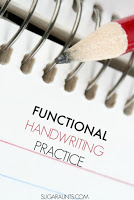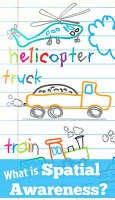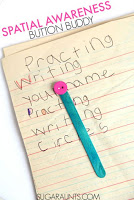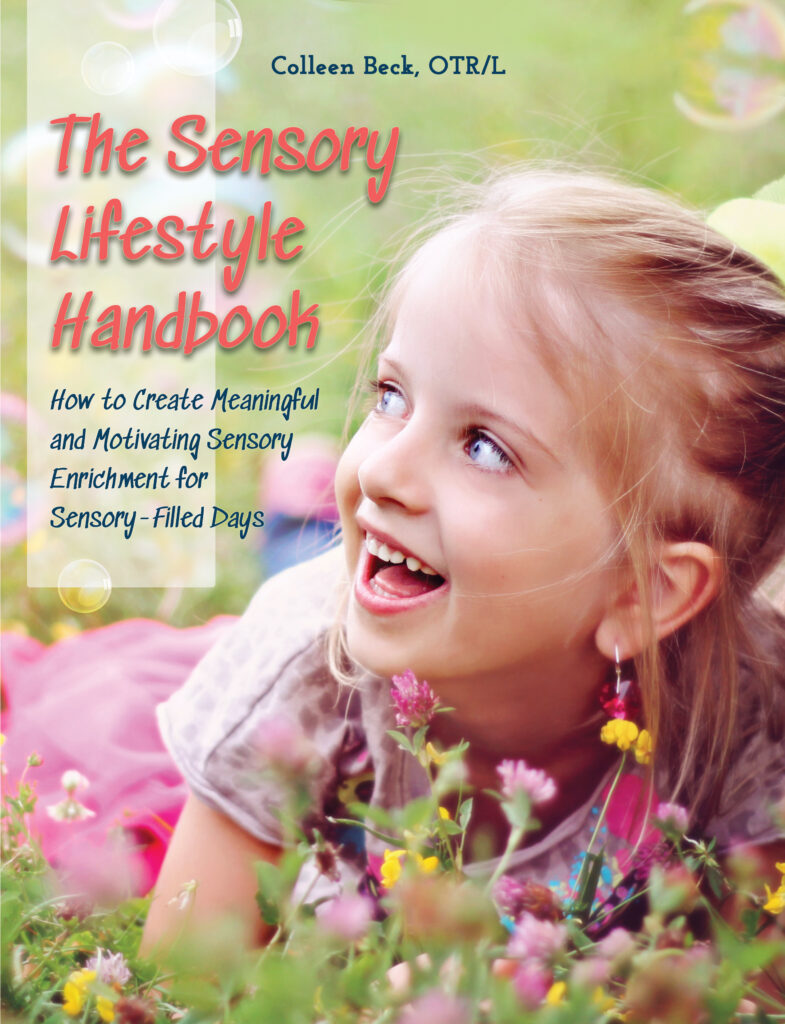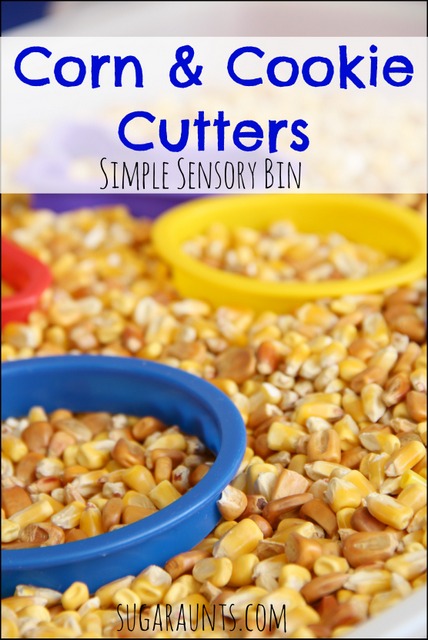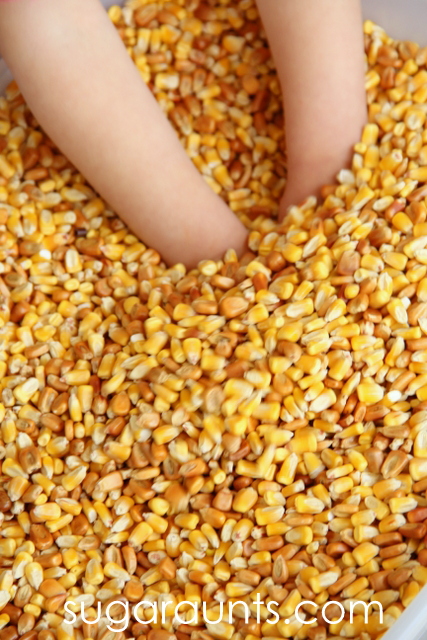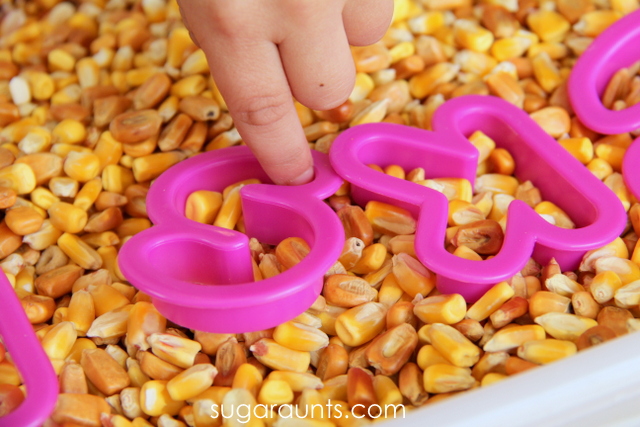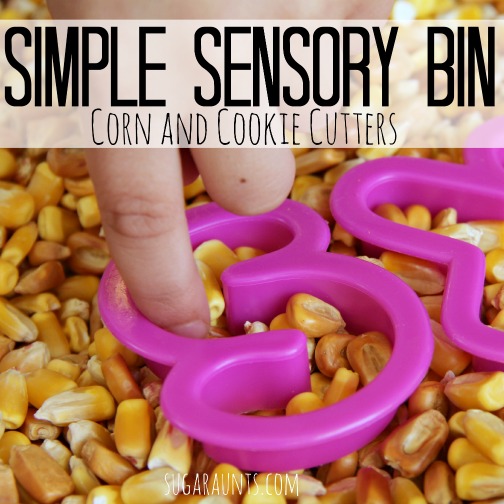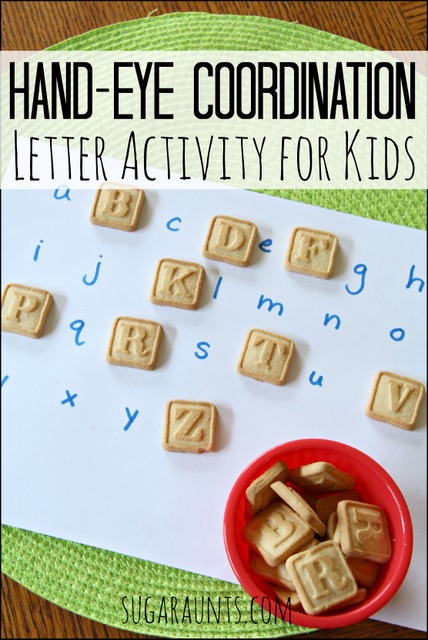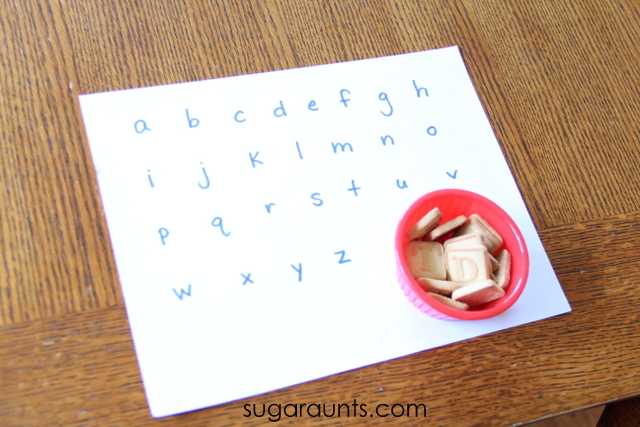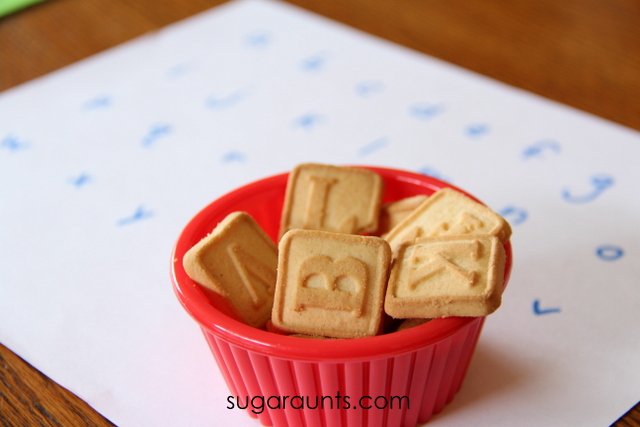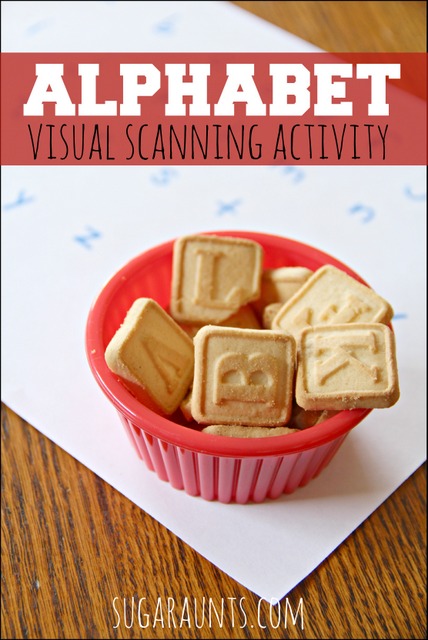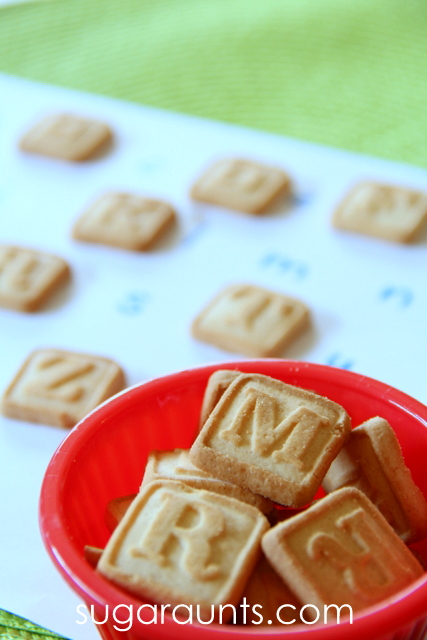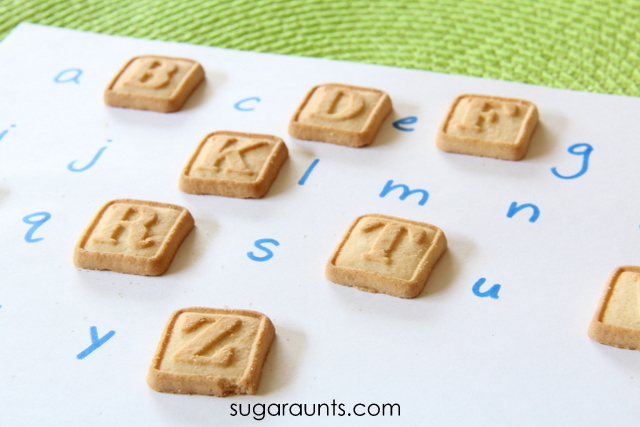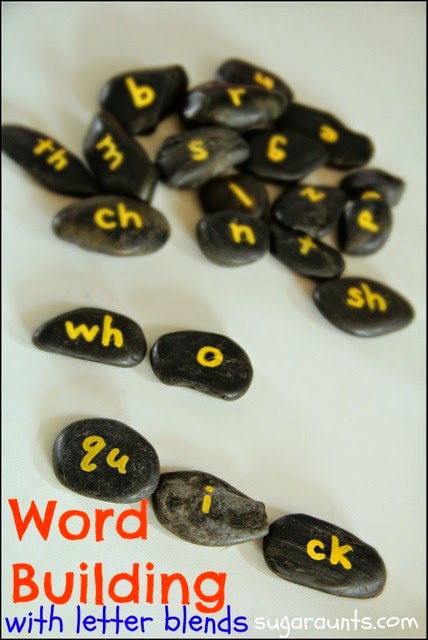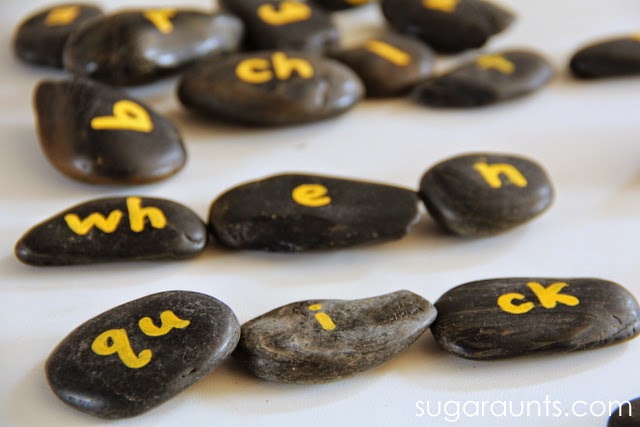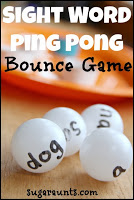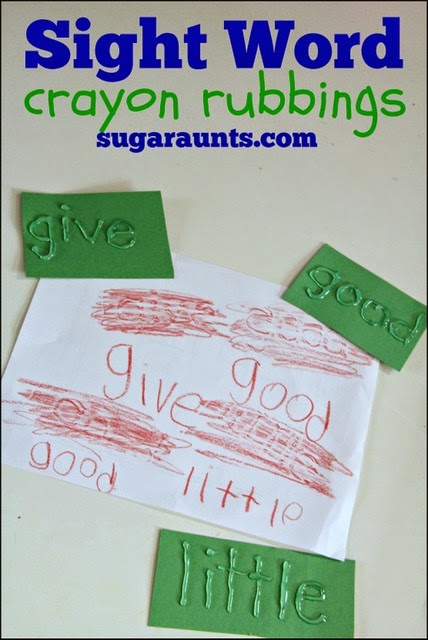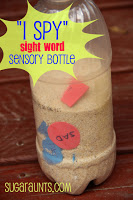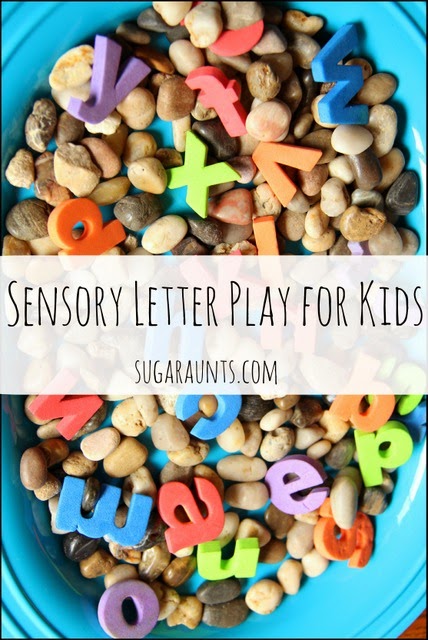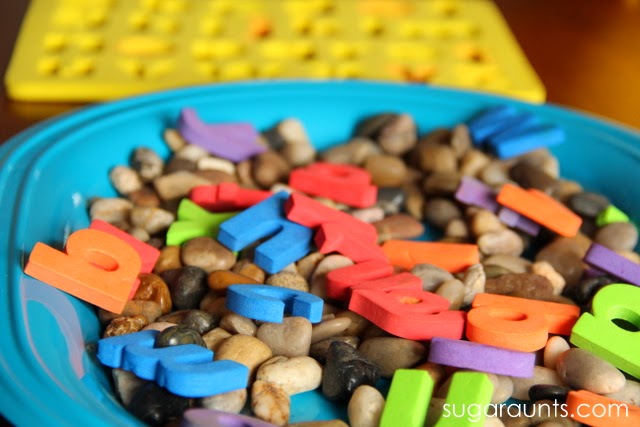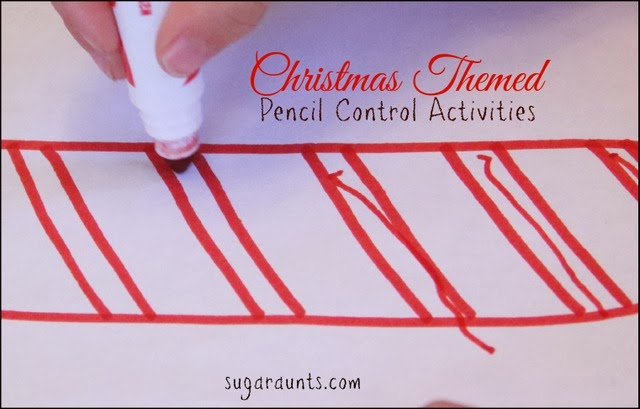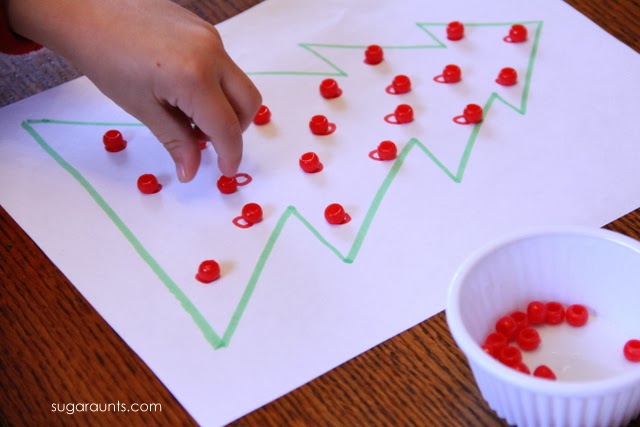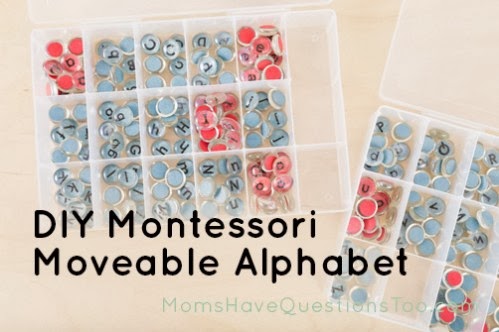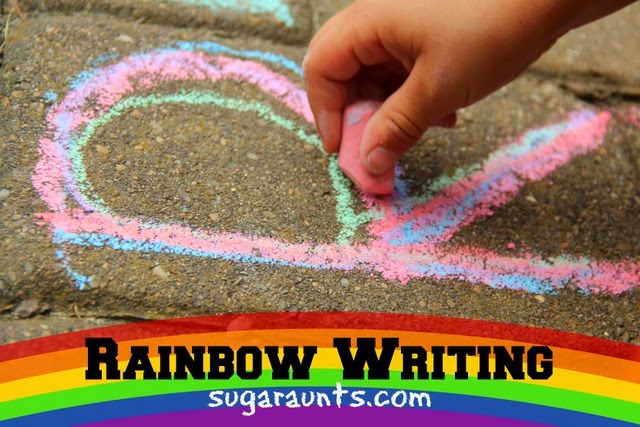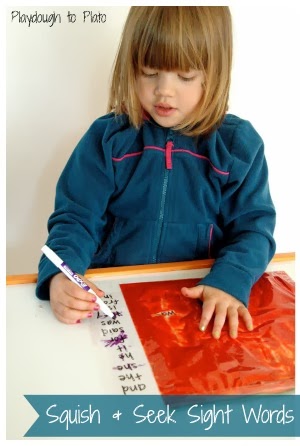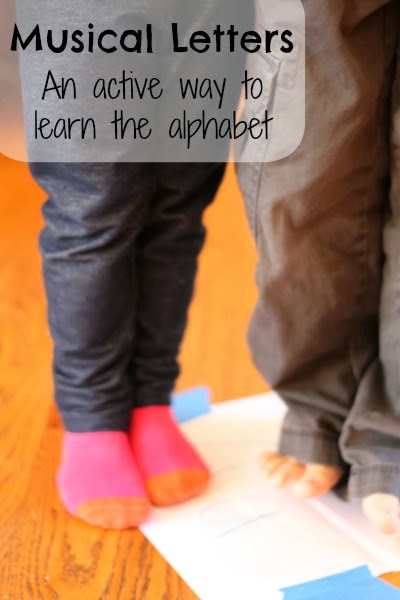There are many handwriting and sensory considerations, from paper sensory issues, to pressing too hard when writing, to sensory issues that impact handwriting posture, handwriting is connected to sensory processing. When teaching a child to write, there are many sensory processing to consider. Today, I’m sharing sensory considerations and strategies to help children in handwriting tasks.
Handwriting and Sensory Issues
This post is part of my new year-long series with 9 other Occupational Therapy and Physical Therapy bloggers as we discuss Functional Skills of Childhood.
Pick up a pencil. Hold it correctly. Write a letter. Copy a word. Fill in a worksheet. Write down the day’s homework assignment in the correct space with a noisy classroom full of talking kids while the teacher chats to someone at the door. The open windows alert you of another class playing on a playground. Bouncing balls, laughing students, buzzing pencil sharpener, bright sunshine, and that homework assignment that needs to be written legibly so you and your parents can read it an hour from now.
One of a child’s occupations are to perform educational activities like handwriting. Holding a pencil, forming letters, writing on lines, and copying from a chalkboard is a multi-sensorial function of childhood.
Handwriting depends on accuracy and legibility. Letters must be formed correctly and with appropriate pencil pressure, on the lines, and with attention to details.
To complete these skills, handwriting and sensory processing are naturally associated. All components of handwriting require integration of our senses for accuracy, legibility, and performance.
In a classroom environment, we are constantly bombarded with an input of sensory information. We receive sensory information from our eyes, ears, skin, muscles, and joints and our brain has the job of organizing the information, selecting the important parts, and disregarding the rest.
When our body’s sensory systems are functioning appropriately, we are able to manage tasks like writing with a pencil. When there is a deficit in one of these areas, there are sensory integration problems and activities that we are required to perform are affected.
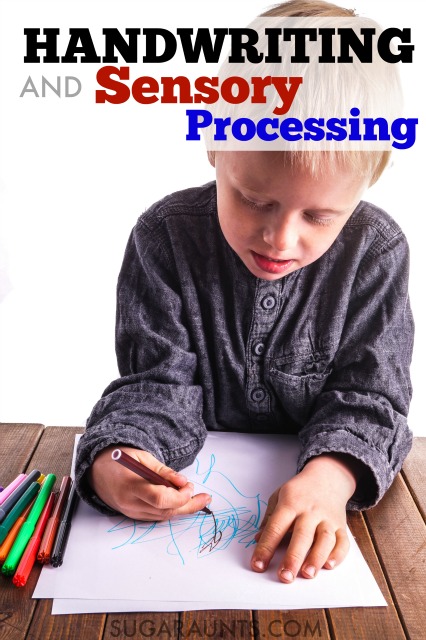
Full Disclosure: This post contains affiliate links.
Sensory Processing and Handwriting
What is sensory processing?
- Tactile System (touch)
- Vestibular System
- Proprioceptive System
- Olfactory System
- Visual System
- Auditory System
- Gustatory System
An Explanation of the Sensory Systems related to Handwriting
A child with proprioception dysfunction may seek out sensory feedback from his environment. You might see these children bumping into their desks, stomping their feet on the ground, kicking their chair or their neighbors chair.
An inefficient grading of movement might result in students holding their pencils too tightly, writing so heavily that the pencil point breaks, or producing messy work with large erasure holes.
A child with vestibular dysfunction may present as a hyperactive child or a hypersensitive child. Some students might have an intolerance for movement and will seem willful and uncooperative, while demanding physical support.
Children with vestibular, tactile, and proprioception difficulties will have trouble with eye-hand coordination. Writing on lines and coloring between lines is difficult. There will also usually be difficulties with depth perception. In order for a child to develop visual perception, they need adequately integrated vestibular and proprioception systems.
Many times, children have auditory and tactile dysfunctions that interfere with handwriting:
The child with auditory processing concerns will seem unaware of where sounds are coming from. When a teacher directs the class to write down items or copy specific information, these directions are lost. They are unable to pay attention to one voice or sound without being distracted by other sounds in the classroom.
Sensory Issues with paper
The child with tactile dysfunction may be either hypersensitive or hypo-sensitive to touch.
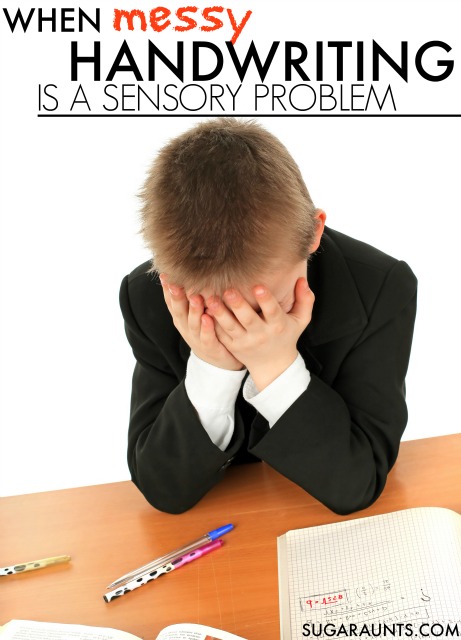
Handwriting Difficulties due to poor Sensory Processing
- The child may be unaware that he drops his pencil.
- Shows a weak grasp.
- Difficulty maintaining an effective writing posture.
- Tires easily in writing tasks.
- Does not notice details (Misses letters when copying words or sentences)
- Desk and writing area are disorganized and sloppy.
- Avoids smells (pencil or paper) in the classroom.
- Easily distracted during writing tasks.
- Difficulty paying attention to a writing task.
- Cannot work silently.
- Visually distracted by others, including noises, scents.
- Difficulty focusing on one section of a chalkboard or one part of a worksheet.
- Seeks movements by moving the chair, wiggling in the seat, bouncing legs and arms and distracts other students with the movements.
- Overly excited after recess and is difficult to settle down.
- Always touching the desk or parts of the chair during writing tasks.
- Craves scents or tastes: chews the pencil for it’s task, smells the paper or pencil shavings.
- Chews the pencil or eraser and clothing.
- Bites hair/shirt/nails when writing.
- Writes with heavy pencil pressure.
- Difficulty with changes in the routine of writing: new paper or type of worksheets
- Low frustration level with errors in letter formation
- Anxiety: wants to make letters and numbers correctly the first time
- Stubborn in handwriting concerns
- Avoids touching pencil shavings, the wooden part of the pencil tip, or the eraser.
- Avoids erasing mistakes
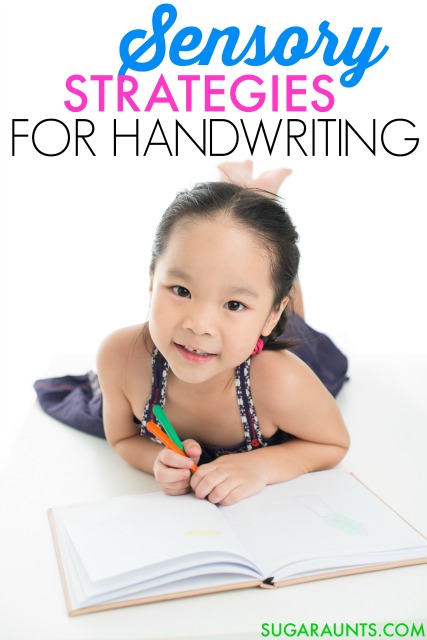
How to Help: Sensory Handwriting Strategies
Heavy Work Sensory Activities to Help with Handwriting
- At the beginning of the day, take down chairs from desks and push them to correct places in the room
- Erase the chalkboard
- Wash desks/dry erase board
- Sharpen pencils with a manual pencil sharpener
- Chewy food breaks (fruit leather, licorice)
- Crunchy food breaks (vegetables, popcorn, pretzels, dry cereal)
- Cut materials from oak-tag or heavy paper
- Carry books with both hands, hugging the books to their chest
- Weight down the student’s chair by taping weights to the chair legs
- Pad the feet of the chair to add extra resistance
- Climb playground equipment
- Carry books and supplies to other classrooms
- Hand fidget toy
and squeeze toys - Brain Breaks
- Wall push-ups
- Chair push-ups
- Animal walk breaks
- Try a variety of pencil grips.
- Wrap the tip of the pencil in clay and tell the child that if the clay is misshaped, then he is pressing too hard on the pencil.
- Try various proprioception in handwriting modifications.
- Tilt the child’s writing surface to a slightly included position using a 3 ring binder. This positioning provides improved wrist positioning and will decrease the force the child presses through his wrist.
- Try writing with carbon paper under the paper to show the child that he needs to press harder or lighter through the pencil.
- Copy written work from a his desk instead of from the chalkboard or overhead.
- Write with a grease pencil
to provide more resistance and feedback. - Remove distractions from the classroom and seat the child away from windows and doors.
- Provide the child with written and verbal instructions.
- Provide a quiet space in the classroom.
- Provide movement breaks.
Typically, the sensory systems and sensory integration is developed by the time a child enters school.
The ability to concentrate while managing sensory input is very much needed for the classroom that is multi-sensorial, like described above.
Problems seen with handwriting, like heavy pencil pressure, sloppy letter formation, difficulty with letter size and form, fast or very slow speed of writing, and inattention to writing tasks are often times an end product of an inefficient and irregular sensory processing system.
A sensory integrative approach to teaching handwriting can be successful for the child with sensory processing concerns. Occupational Therapists can analyze sensory processing skills during the performance of handwriting (and other school-day tasks).
An OT uses formal evaluations, screening tools, standardized tests, observation of classroom behaviors, parent/teacher checklists, and observation of classroom behaviors and play activities to identify handwriting issues related to sensory processing.
This post is part of the Functional Skills for Kids. See all of the bloggers who are participating and more about the series here. Looking for more information on the components and considerations related to Handwriting?
Resources:
Ayres, A.J. (1979). Sensory integration and the child. Los Angeles: Western Psychological Services.
Bundy, A., Lane, S., & Murray, E. (2002). Sensory Integration Theory and Practice. F. A. Davis Company.
Looking for more Handwriting ideas? These are some of our favorites:
- Functional Handwriting Practice Ideas
- What is Visual Spacing
- Visual Tracking Tips and Tools
- Handwriting Spacing Tool and Spatial Awareness Tips and Tools
The Sensory Lifestyle Handbook walks you through sensory processing information, each step of creating a meaningful and motivating sensory diet, that is guided by the individual’s personal interests and preferences.
The Sensory Lifestyle Handbook is not just about creating a sensory diet to meet sensory processing needs. This handbook is your key to creating an active and thriving lifestyle based on a deep understanding of sensory processing.

Colleen Beck, OTR/L has been an occupational therapist since 2000, working in school-based, hand therapy, outpatient peds, EI, and SNF. Colleen created The OT Toolbox to inspire therapists, teachers, and parents with easy and fun tools to help children thrive. Read her story about going from an OT making $3/hour (after paying for kids’ childcare) to a full-time OT resource creator for millions of readers. Want to collaborate? Send an email to contact@theottoolbox.com.


